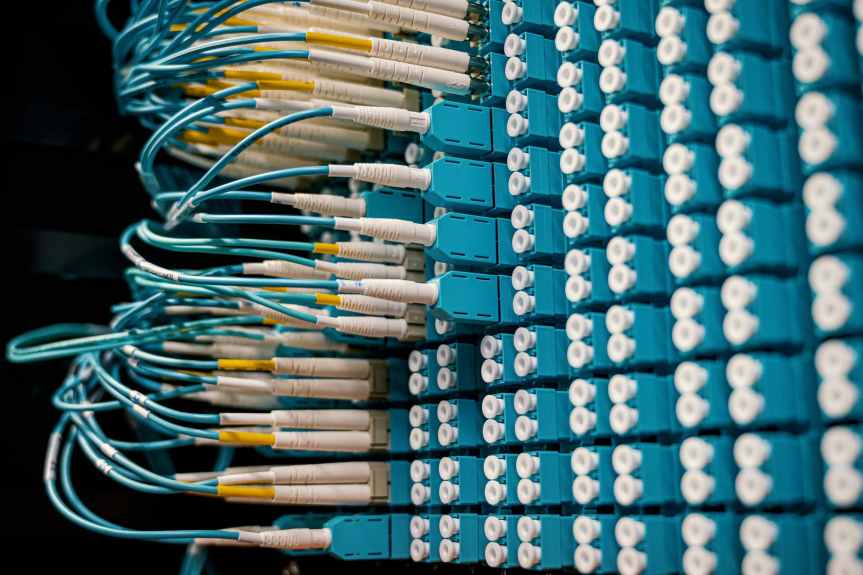- Layer 1: Physical Layer
- Data : Physical bits
- Equipment : cables, fiber optic, ethernet hubs
- Layer 2 Data Link
- 2A. MAC ( Medium Access control)
- 2B. LLC ( Logical Link Control)
- Data : Frames
- Equipment : Switches , Bridges , Network Card.
- Layer 3 : Network Layer
- Data : packet
- Equipment: Firewalls
- L2 Switch (hardware)
- L3 Switches (logical addressing)
- Layer 4–6 switch (LB,NAT,SBC)
- Layer 7 switch (CDN,IPPBX)

Layer 1: Physical Layer
Layer 1 Data : Physical bits
Layer 1 Equipment : Physical mediums copper ethernet cables, fiber optic, ethernet hubs
or even wireless mediums such as WiFi Bluettoth , Microwave , IR( Infra Red )Remote or other over the air technologies.
Factors affecting physical layer protocols could be
Wiring standards such as T568A and B for Ethernet
Radio frequencies such as Wi-Fi, BLE, Zigbee , LORA
Layer 2 Data Link
Layer 2 links or transmistts data between nodes in a network, it involves protocol like FrameRelay.
The sublayers of this layer are
- 2A. MAC ( Medium Access control) : prevent collision in half duplex network. Although half duplex is non existant now, duplex negotations have simmilar collision avoidance.
- 2B. LLC ( Logical Link Control) : mechanisms for multiplexing Layer 3 Protocol such as it can acts as interface between the media access control sublayer and the network layer.
Layer 2 Data : The data packets are usally referred to as Frames and are structured to have a header containing source and destination adress as well as payload.
VLAN(Virtual LAN) implemeted atop this layer protcols helps to split up broadcast domains by allowing to sedment devices to their own dedicated LAN.
Layer 2 Equipment : More intelligent than Layer 1 – Switches , Bridges , Network Card.
While a hub ( Layer 1 ) would simply broadcast traffic to all ports, a Switch could read the destnation MAC address and only forward to the specific port that MAC address is linked to.
Layer 3 : Network Layer
This layer defines a logical address of an endpoint.
Unlike MAc address ( from Layer 2 ) which is fixed for a device and assigned onetime by the vendor during the manufacturing process, Layer 3 endpoints are not fixed and could be a static IP configuration or a DHCP automated configuration
Layer 3 Data : Organization of Data at this layer is referred to as a packet, which is a stateless grouping of data
Layer 3 Equipment : Firewalls can operate on this layer( can operate on upper layers too) using stateless static filtering.

While some protocol are layer specifc other can operate in multiple layers such as MultiLayer Switch which make decision based on following :
– MAC address and Protocol field in L2 data link frame
– IP address and Protocol field in L3 network layer header
– Port numbers in L4 transport layer header
L2 Switch
Hardware-based switches, which use the MAC address of the host’s network interface cards (NICs) to decide where to forward frames.
Mostly carried out without frame modification unless the frame needs to be encapsulated for a different medium such as wired to wireless.
- (+) Efficient since they have least modificatons to frame
- (-) acting as multipot brdges causes performance issues. Increasing size of network and slow convergence of spanning tree is probelmatic for such using broadcast/multicast.
L3 Switches
Determine paths based on logical addressing.
These also check and recompute layer-3 header checksums and examine and update the time to live (TTL) field for validity.
Network switches can perform almost all of the functions of a router however they are designed for the specific physical medium.
- (+) lower network latency as a packet can be routed without making extra network hops to a router.
Layer 4-6 switch
Used by web switch, content switch, Softswitch. These are build on applications on higher layer in network stack and are more domain orietned such as
- Load balancer for Web traffic
- NAT (Network Address Traversal)
- SBC ( Session Border Controller )
Layer 7 switch
Recognize application level transactions and may use URL to distribute load, also using a cache such as
CDN ( Content Delivery Network).
Switches operating on higher layers, also referred to by some vendors as AppSwitches, can route packets based on application information can provide superior quality of service (QoS) for IP voice and media streams.
It can help with domain-specific load-balancing capabilities for voice-over-IP gateway and IP PBX ( eg packet-tagging techniques, SIP handlers to prioritize, Differentiated Services ).

